Violin sight reading is an important skill to learn how to process and play new music quickly. Today I’m sharing my best tips to help you get started sight reading violin sheet music. It might seem complicated, but with regular practice, it’ll become much easier.
Before Your Start Violin Sight Reading
Sight reading is the process of playing new music for the first time.
It’s important to practice sight reading. Learning this skill will help you learn all your music faster and more accurately!
To get started with sight reading, you’ll first need to understand how to read music so I recommend you to first read my article Violin Note Reading for Beginners – How to Read Sheet Music on the Violin. If you’d like just to review the notes of the violin, I have an article with free PDF charts to help you here.
If you’re a member of Julia’s Violin Academy, you can access my course about note reading, which includes all notes in the first position and various types of rhythms. You’ll need a decent understanding of these concepts before trying to sight read on the violin.
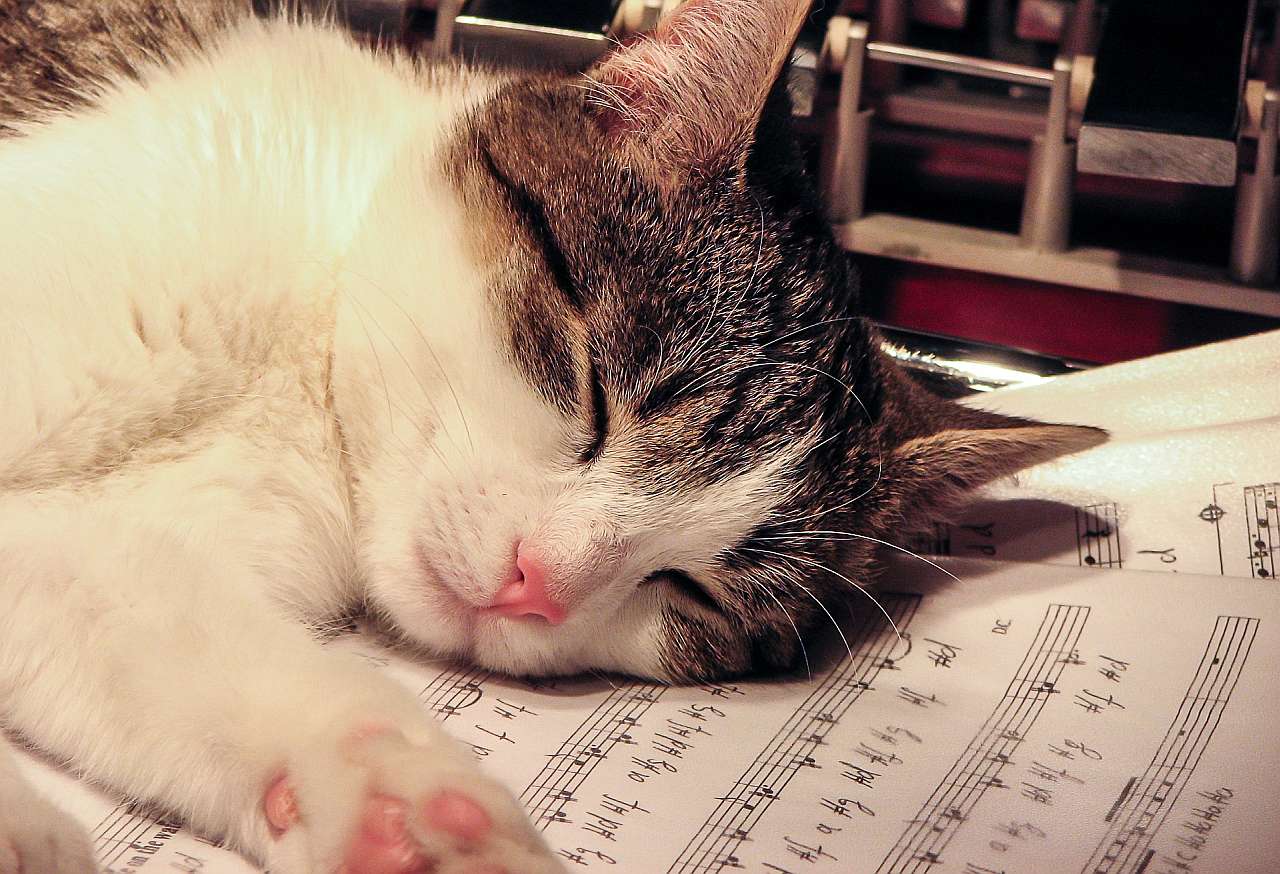
Benefits of sight reading
Learning how to sight read will help you read all music faster because you’ll become more fluent in music and quite comfortable with the violin fingerboard. This will translate to every piece of music you want to learn. Sight reading helps us think about music analytically, which then helps us pick up on patterns faster.
With experience in sight reading, you’ll be able to naturally learn new music faster. This means your practice sessions can become more focused on music making, and less focused on learning new notes and rhythms.
Goals of violin sight reading
There are a lot of goals for sight reading. It’s a great skill to have! Successful sight reading will include playing with a steady tempo, playing accurate rhythms, and correct notes.
Advanced sight readers will be able to pick up on the style of a piece of music, and make beautiful phrases out of the notes they’re just reading for the first time. It’s very difficult to get to that level of sight reading, but it’s a great goal to have!
How to prepare for sight reading violin music
Before actually sight reading, it’s important to prepare. This means learning common finger patterns that pop up in violin music.
The best way to prepare is by practicing scales and arpeggios. Each scale will teach you the finger placement for a given key, and the corresponding arpeggios will walk you through very common finger patterns.
Start preparing to sight reading by downloading my free booklets with scales and arpeggios for beginners and practicing that to get your fingers ready.
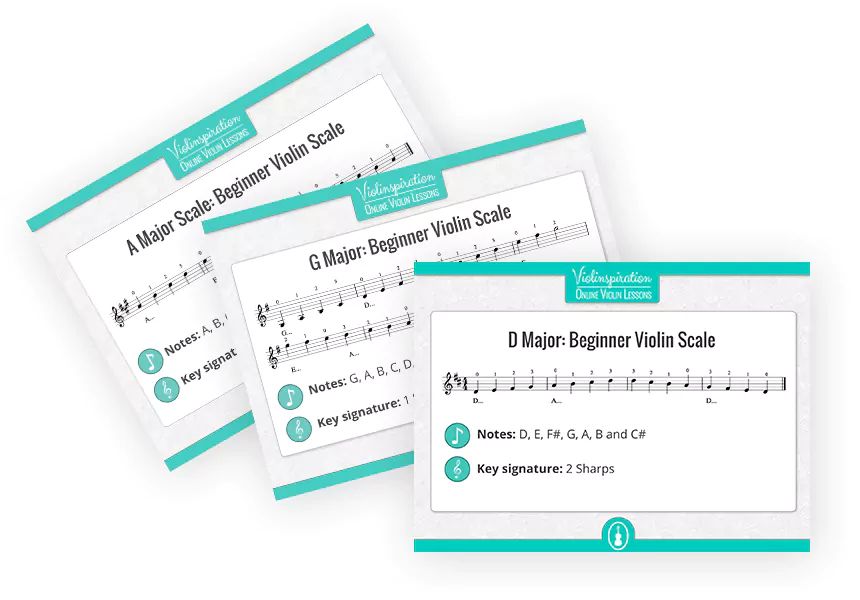
5 Most Common Violin Scales for Beginners
Get Free Easy Exercises
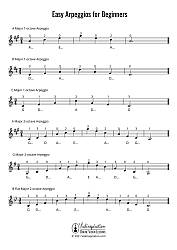
Arpeggios for Beginners
Get Free Easy Exercises
Another great way to prepare for sight reading is by practicing broken thirds. Skips pop up all the time in music, and we want our fingers to be ready for them. I included one broken-thirds exercise in the booklet with easy sight reading exercises for you, you can download it below.
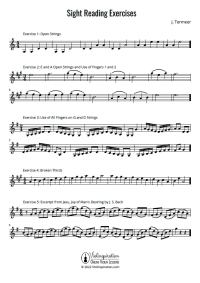
Violin Sight Reading Exercises for Beginners
Get Free Easy Exercises
How do you sight read violin sheet music?
Sight reading is the act of playing a piece of music that’s entirely new to you. While it sounds simple, it requires a lot of concentration. It’s easy to become nervous while sight reading, but by breaking the process down into steps, you can easily sight read most violin sheet music!
1. Start out with easy, basic music
Don’t try to sight read a violin concerto and expect it to go perfectly, especially if the concerto is out of your comfort zone. Start with something that looks easy to you. Maybe this is a short piece of music in an easy-to-play key with very basic rhythms like half notes and quarter notes. There are some ideas for you here and here 🙂
Start out easy, and then you can work your way up. That’ll give you a strong foundation before you look at more difficult music in the future.
2. Scan the music with your eyes
First, glance over the music with just your eyes. One of the most important things to do while sight reading is to look at the music without playing. You don’t even need to pick up your violin yet!
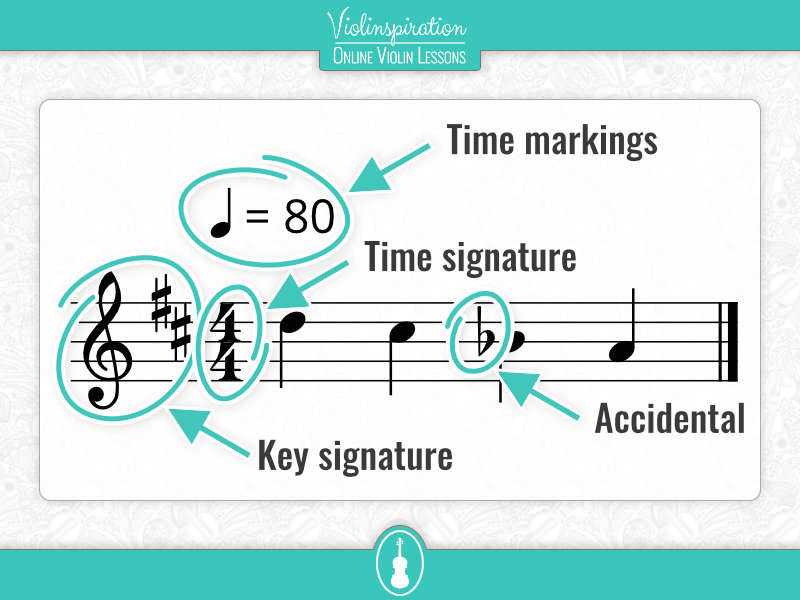
There are a few important things to look for:
- What is the key signature? Are there sharps or flats?
- What is the time signature? Have you played in this time signature before?
- Are there tempo markings? How fast or slow would the music be played in a performance?
- Who wrote this piece of music? Do you know what era the composer lived in? Have you played anything else by this composer? This can help you interpret the style of the music.
- Do you see any accidentals within the music?
A lot of us mess up when we see accidentals while sight reading. By picking out where they are before playing with the violin, you’ll save yourself a lot of trouble!
- What rhythms do you notice? Do you recognize all of the note values? Do you notice any rhythmic patterns? Are there complex rhythms that you’ve never seen before?
Don’t worry if it looks confusing to you. You can first memorize what are the note lengths. I hope my tutorial will help you with this:
- Now, look at the melodies. Do you see any melodic patterns or groups of notes that repeat?
3. Sing the rhythm
Now that you’ve done your initial glance over, let’s focus again on the rhythms. When sight reading on the violin, keeping a steady pulse as playing the correct rhythms is very important. Sight singing the rhythms will feel easier than playing them on the violin.
Start by clapping a steady beat, as slow of a tempo as you think you’ll need to process all of the rhythms. When you’re ready, sing through the rhythm of the music. Don’t worry about singing on the pitch – this is just to get an idea of the structure of the music.
4. Practice the scale
When you scanned through the music with your eyes, you identified the key signature. Now pick up your violin and play the scale that the music is in.

5 Most Common Violin Scales for Beginners
Get Free Easy Exercises
If you know them, play through arpeggios that match with the scale. This will help you practice finger patterns that will probably pop up in the music you’re sight reading!

Arpeggios for Beginners
Get Free Easy Exercises
5. Play through the music on the violin
Finally, the moment has come to actually sight read while playing on the violin! By now, you’ve figured out all of the clues you need to play the music successfully.
Play at as slow of a speed as you need to process everything that pops up on the page. Always look ahead with your eyes, and don’t dwell on mistakes. When sight reading or performing music, our focus should always be forward, not backward. We tend to get distracted thinking about any mistakes we made, and how we could’ve fixed them.
When we sight read, we always want to move forward at a steady pace. The biggest goal is to get through the whole piece or excerpt of music without stopping! Looking ahead with your eyes will help propel the music forward.
How to perfect violin sight reading?
The best way to get better at sight reading is to do it often. Start with something that looks basic and easy, and then work your way up to harder material once you start feeling comfortable. If you can, try to sight read at least two lines of new music a day.
To get better at sight reading, continue practicing scales, arpeggios, and broken thirds. These will help solidify commonly used finger patterns into your muscle memory, making sight reading feel more natural.
Remember to download my free violin sight reading exercises to practice the skills you’ll need to perfect this new ability.

Violin Sight Reading Exercises for Beginners
Get Free Easy Exercises
If you feel stuck sight reading violin sheet music, a great way to change things up is to sight read with others! If you have friends who are also learning instruments, get together and play through some new music. Sight-reading parties are a lot of fun – try reading through a whole piece, whether it’s a duet, chamber music, or maybe even a pop song. It’s a lot of fun, and will help you develop your sight-reading skills very fast!
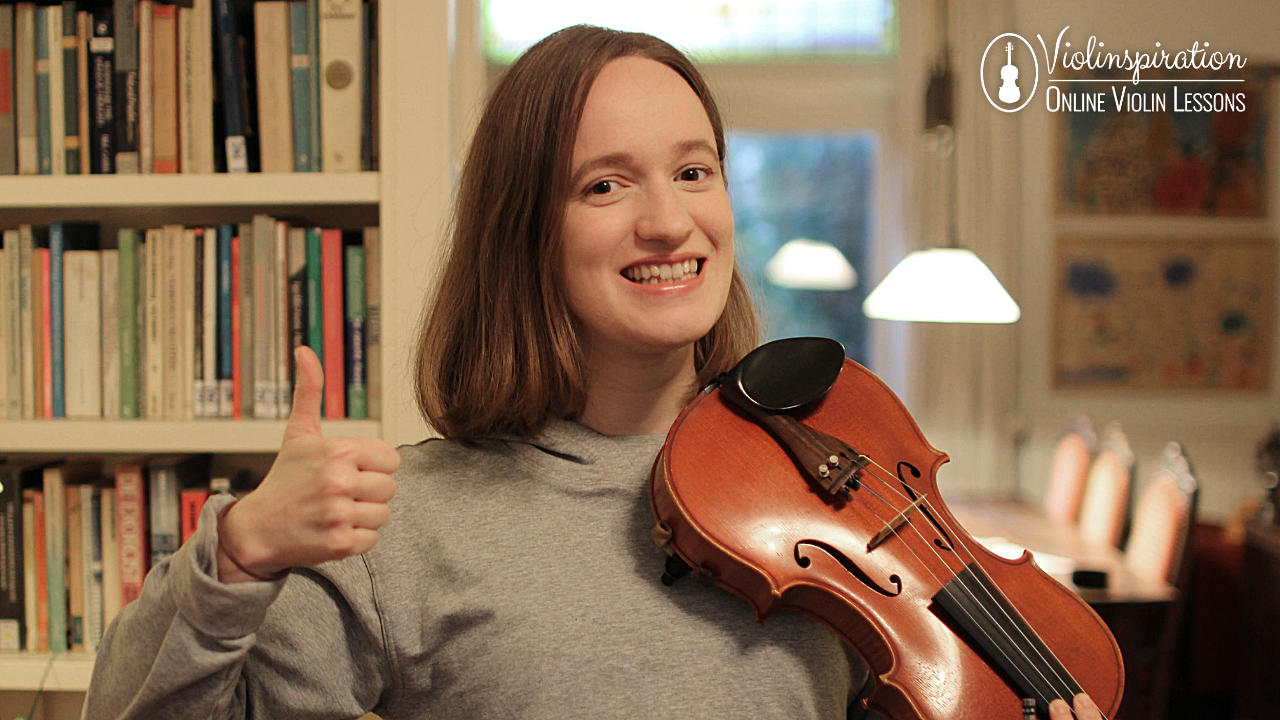
Final Note
Sight reading is an important skill to have as a violinist, even as a beginner! By practicing sight reading you’ll learn how to read music faster and you’ll get to know the fingerboard quite well.
Practice sight reading violin sheet music often, and you’ll notice your ability to play the instrument will suddenly grow at a fast rate. It’s amazing how this skill can help improve our overall playing!
























